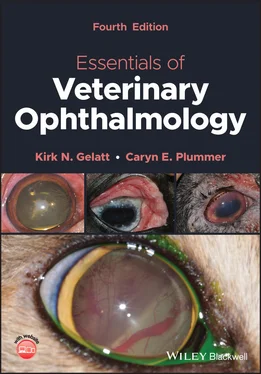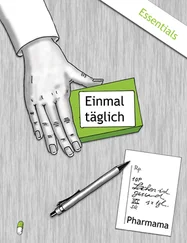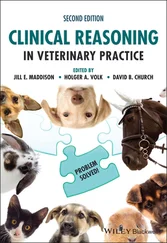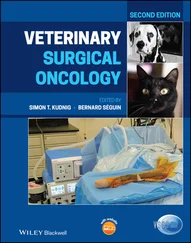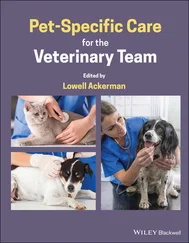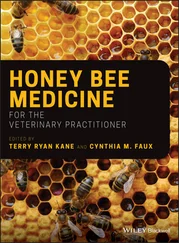2 Chapter 2 Figure 2.1 The tear film is a complex multilayered fluid phase. This figure ... Figure 2.2 In the normal cornea (a), a cross section of the corneal fibrils ... Figure 2.3 Schematic of collagen fiber organization in the canine cornea. Th... Figure 2.4 Schematic of corneal innervation. The limbal plexus is a ring‐lik... Figure 2.5 Schematic of AH production across the PE and NPE of the ciliary b... Figure 2.6 AH drainage occurs via the traditional and uveoscleral outflow pa... Figure 2.7 Chemical composition of the aqueous humor and lens. Water and pro... Figure 2.8 Representation of light as a wave, which is characterized by two ... Figure 2.9 Refraction of light as it passes from one medium to another is go... Figure 2.10 Refraction of light through various lenses. (a) A spherical conv... Figure 2.11 The effect of vitreous elongation on ocular refraction. (a) A fo... Figure 2.12 (a) In emmetropia, parallel light rays are focused on the retina... Figure 2.13 Schematic drawing of the mammalian retina with part of the choro... Figure 2.14 (a) The discs of the outer segments (facing the retinal pigment ... Figure 2.15 A considerable amount of processing of data from the photorecept... Figure 2.16 In a comprehensive canine ERG protocol, following preparation of... Figure 2.17 (a) The visual field of the horse showing a frontal binocular fi... Figure 2.18 Binocular disparity and the perception of stereoscopic depth. Th... Figure 2.19 A colorful dog, as seen by a normal trichromat (a). In (b), the ...
3 Chapter 3 Figure 3.1 The BAB in the anterior segment consists of the endothelial cells... Figure 3.2 Disposition of ophthalmic drugs after instillation to the eye. On... Figure 3.3 Topically applied medications can enter the systemic circulation ... Figure 3.4 The differences between the drug levels between single eyedrop in... Figure 3.5 Routes of drug distribution after subconjunctival injection. Figure 3.6 Contribution of carbonic anhydrase to AH formation in the pigment... Figure 3.7 Effect on IOP of 0.005% latanoprost in the Beagle with primary op...
4 Chapter 4Figure 4.1 Horse skull depicting sites for the auriculopalpebral (a and b), ...Figure 4.2 Corneal reflex. Corneal sensation is tested by means of a wisp of...Figure 4.3 Use of a handheld slit‐lamp biomicroscope in a dog.Figure 4.4 Optics of direct ophthalmoscopy. The direct ophthalmoscope allows...Figure 4.5 Close direct ophthalmoscopy. The examiner must be as close as pos...Figure 4.6 Direct ophthalmoscope head. (a) Observer's side with viewing aper...Figure 4.7 Binocular indirect ophthalmoscopy with the Keeler Vantage head‐mo...Figure 4.8 Comparison of direct (a and d), panoptic (b and e), and indirect ...Figure 4.9 The optics of binocular indirect ophthalmoscope allow the light f...Figure 4.10 Monocular indirect ophthalmoscopy. The technique can be carried ...Figure 4.11 The panoptic ophthalmoscope is a good compromise between the dir...Figure 4.12 Retinoscopy carried out in a dog. Note the working distance of 6...Figure 4.13 Gonioscopy lenses can be divided into direct and indirect. (a) D...Figure 4.14 Koeppe lens in situ . The lens is retained by suction on the corn...Figure 4.15 Normal ICA in a Flat‐Coated Retriever.Figure 4.16 Corneal sensation can be assessed quantitatively by a Cochet–Bon...Figure 4.17 (a) To obtain a conjunctival sample, for either microbiology or ...Figure 4.18 Aqueous tear production can be accessed by the Schirmer tear tes...Figure 4.19 Ophthalmic stains. A. Fluorescein dye is available as a sterile ...Figure 4.20 Application of fluorescein dye. The fluorescein impregnated stri...Figure 4.21 Jones test (fluorescein dye passage test) in a one‐year‐old Labr...Figure 4.22 A positive Jones result at the right nostril in a horse.Figure 4.23 Selection of plastic and metal lacrimal cannulas suitable for pe...Figure 4.24 Nasolacrimal flush in a dog. With a 2–5‐ml syringe of sterile sa...Figure 4.25 Positive Seidel test depicts a leaking corneal wound at 12 o'clo...Figure 4.26 Indentation tonometry. (a) Schiotz tonometer with 7.5 and 10.0 g...Figure 4.27 Applanation tonometry. (a) TonoPen Vet. (b) The footplate contai...Figure 4.28 Rebound tonometry with the TonoVet in a dog.Figure 4.29 Paracentesis. (a) Aqueous paracentesis. The hypodermic needle is...Figure 4.30 Reformatted sagittal CT images of a normal feline globe seen in ...Figure 4.31 (a) Dacryocystorhinogram of the normal nasolacrimal duct system ...Figure 4.32 The appearance of the normal canine globe and orbit on (a) dorsa...Figure 4.33 (a) Noncontact specular microscopy being undertaken on an anesth...Figure 4.34 OCT with 3D reconstruction images of the fundus of a normal, 15‐...Figure 4.35 Normal equine fluorescent antibody image with maximal fluorescen...Figure 4.36 (a) Standardized diagnostic A‐mode probe with tissue model for c...Figure 4.37 Vertical axial scan. The white marker on the probe points dorsal...Figure 4.38 Normal B‐mode/vector A‐scan echogram of the canine eye. The inte...Figure 4.39 Ciliary body tumor (T) invading the vitreous and causing a lens ...Figure 4.40 B‐mode ultrasound of a long‐standing retinal detachment, which a...Figure 4.41 B‐mode/vector A‐scan echogram of a retrobulbar abscess in a Mini...Figure 4.42 UBM (50 MHz) of the ICA of a dog. A, cornea; B, sclera; C, basal...Figure 4.43 Color Doppler images (top) and pulse waves (bottom) of the short...Figure 4.44 A dark‐adapted canine ERG in response to a brief, bright flash. ...Figure 4.45 (a) The corkscrew‐, needle‐, and button‐type electrodes are reli...Figure 4.46 Two types of stimulators for FERGs and flash VEPs. (a) Both the ...Figure 4.47 Four ERG responses from a normal dog. (a) A mixed, dark‐adapted ...
5 Chapter 5Figure 5.1 Canine skull demonstrating the lack of an osseous orbital floor, ...Figure 5.2 Ultrasonography of an orbital neoplasm (meningioma) in a 10‐year‐...Figure 5.3 Ultrasound probe placement for a transoral approach to the orbit....Figure 5.4 Orbital foreign body in a six‐year‐old dog. (a) Dog at initial pr...Figure 5.5 Image illustrating transoral abscess drainage technique.Figure 5.6 MMM in a German Shepherd. There is marked swelling of the mastica...Figure 5.7 (a) Bilateral extraocular polymyositis in an eight‐month‐old Gold...Figure 5.8 A 12 year‐old mixed breed dog with exophthalmos and dorsolateral ...Figure 5.9 Proptosis of the right globe in a young Golden Retriever. There i...Figure 5.10 Severe proptosis with avulsion of the optic nerve and several ex...Figure 5.11 Enucleation: subconjunctival approach. (a) Incision of the bulba...Figure 5.12 (a) Dog with intrascleral prostheses in both eyes. (b) Close‐up ...
6 Chapter 6Figure 6.1 Cross section through the canine lid: (1) eyelash‐like hair on th...Figure 6.2 Muscles of the lids of the left eye of the dog: (1) orbicular ocu ...Figure 6.3 The ends of upper lid or lateral canthus sutures can be caught or...Figure 6.4 Pathological ankyloblepharon. Delayed eyelid opening in a puppy h...Figure 6.5 Distichiasis (hairs in or on the lid margin) emerging from the me...Figure 6.6. (a) Cryodestruction of multiple distichiae in the conjunctiva–ta...Figure 6.7 Entropion correction by retraction sutures (tacking). The sutures...Figure 6.8 The Celsus–Hotz procedure for the correction of severe lower lid ...Figure 6.9 Pronounced macroblepharon–ectropion (diamond‐shaped fissure) in a...Figure 6.10 The Kühnt–Szymanowski procedure, modified by Blaskovic and furth...Figure 6.11 The Roberts–Jensen pocket method for lid fissure length reductio...Figure 6.12 For the treatment of nasal fold trichiasis, the nasal folds can ...Figure 6.13 Chronic staphylococcal blepharitis in an adult dog.Figure 6.14 Eyelid pyogranulomas of the upper lid and lateral canthus in a M...Figure 6.15 Immune‐mediated medial canthal blepharitis in an adult mongrel G...Figure 6.16 Preoperative (a) and postoperative (b) appearance of an adenoma ...Figure 6.17 Temporary tarsorrhaphy. (a) After, for example, a canthotomy and...
Читать дальше
